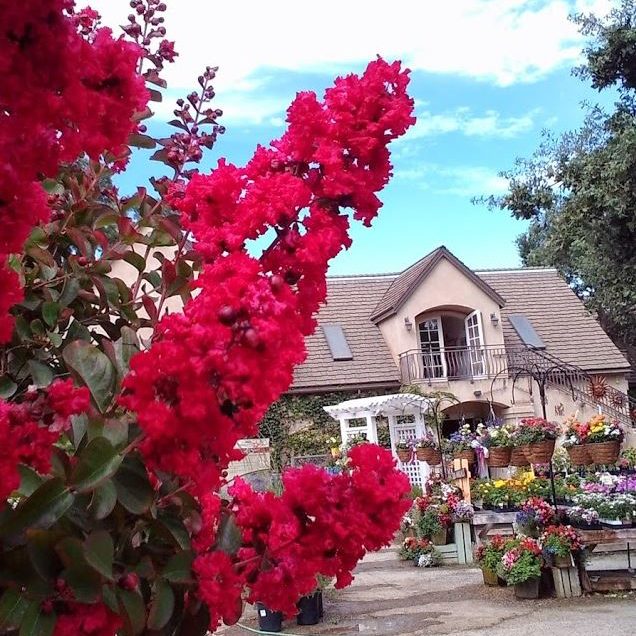
Some plants perform best when the heat is on; Crape Myrtles revel in the sun and heat. They are summer show-offs. In full bloom this beautiful shrub/tree radiates color, sporting a full head of crinkled, “crepe” like blooms in various shades, and there are more talents to this tree.
Crape myrtles are drought tolerant once established, but that does not mean they want the water turned off. New trees require even moisture.
Earlier in the year, Crape Myrtles give another show when the new foliage breaks with a coppery red tone; and as the season progresses, the bark often splits to reveal a spring pink undercoat. In autumn the handsome green foliage of many varieties changes to either red-orange or maroon before dropping to the ground.
It is, however, the mass of summer blooms, which makes Crape Myrtle worth growing. They range in colors from white, pink, lavender, and purple to almost brilliant red. If it’s white you like, ask for Natchez. Catawba produces a deep purple and for a hot pink choose the Pink Velour.
Another choice is the brilliant red crape myrtle called Dynamite. It’s cherry red flowers, crimson buds, and leaves will leave no doubt that it will create an eye-catching display in your garden. As the red flowers age, they will create an explosion of color.
If powdery mildew has been a problem in the past on your crape myrtle, fear no longer! These mildew resistant varieties are available now in good supply. Muskogee has a lavender pink blossom and produces the most brilliant fall colors of scarlet, orange and yellow. Tuscarora is more upright and produces coral-red blooms in huge flower trusses.
For smaller spaces, enjoy some of the smaller crape myrtle bushes and patio trees. Any of these varieties will add an abundance of color to your summertime landscape. We have many Crape Myrtles in a variety of sizes.
Follow us in Social Media